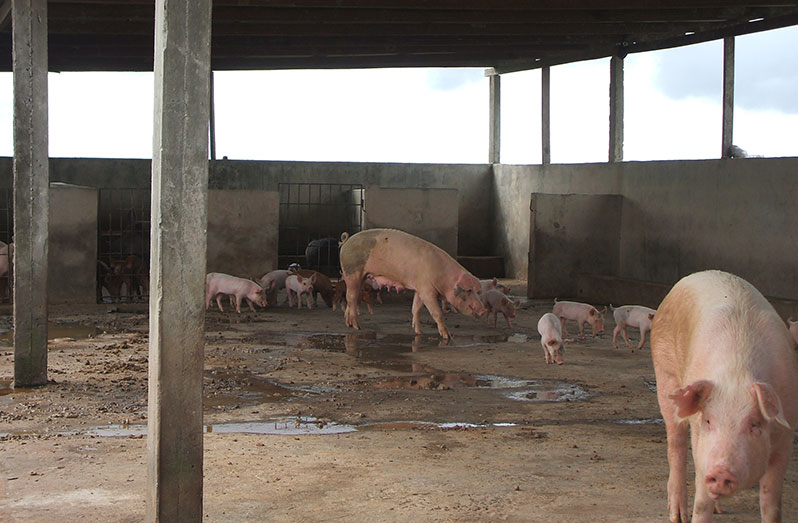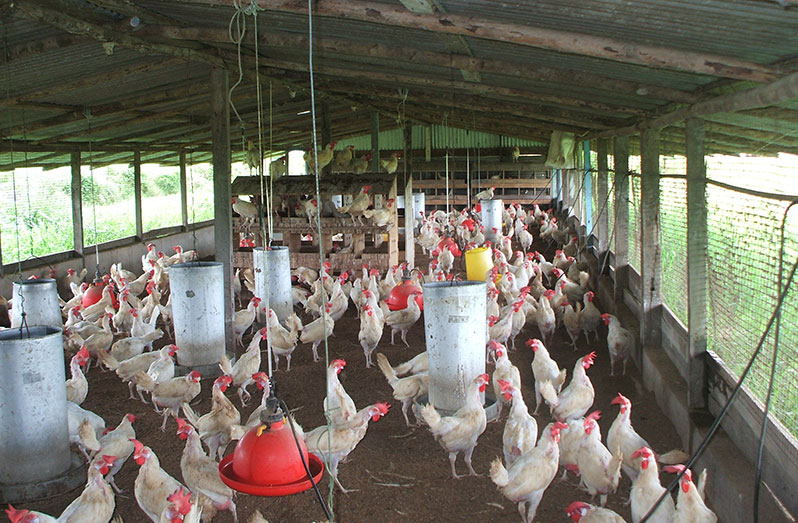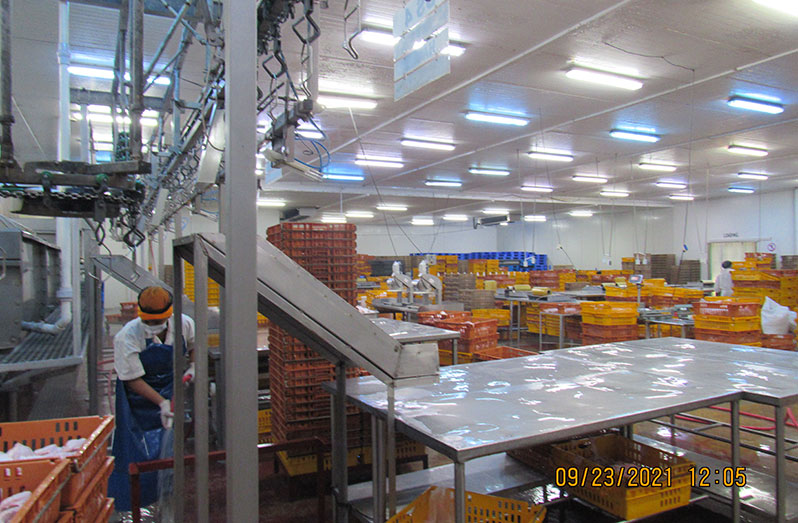GUYANA continues its celebration of Agriculture Month under the theme, “Transforming our Food Systems: Achieving Food and Nutrition Security.” Given the dire need to change our agricultural and food system, this theme is quite fitting to address the food-security challenges encountered because of drought, the COVID-19 pandemic, and the unprecedented floods in May/June 2021. Let’s take a look at the role of the EPA and how good agricultural practices help to protect the environment.
Agriculture contributes significantly to water pollution by releasing organic matter such as animal waste and running off of excess nutrients such as nitrogen and phosphorus. This often results in fish kills; contamination of drinking-water supplies; creating dead zones in water bodies; and poisoning of humans (cancer and blue baby syndrome).
Freshwater is the lifeblood of agriculture. Since most of the world’s freshwater is used to irrigate crops, the two are intertwined, hence, management of the resource and the sector should be interconnected.
 Agricultural water use will be a key element for increasing food production, especially in many developing countries where water is often scarce. Currently, around 800 million people in developing countries are chronically undernourished. While there is no global water crisis, the severe water and food security problems in some developing countries and regions need to be urgently addressed. One in five developing countries will face water shortages by 2030.
Agricultural water use will be a key element for increasing food production, especially in many developing countries where water is often scarce. Currently, around 800 million people in developing countries are chronically undernourished. While there is no global water crisis, the severe water and food security problems in some developing countries and regions need to be urgently addressed. One in five developing countries will face water shortages by 2030.
Environmental sustainability in agriculture means good stewardship of the natural systems and resources on which farms rely. Among other things, this involves:
* Building and maintaining healthy soil;
* Managing water wisely;
* Minimising air, water, and climate pollution; and
* Promoting biodiversity.
Sustainable agricultural practices include, but are not limited to:
* Rotating crops and embracing diversity. Planting a variety of crops can have many benefits, including healthier soil and improved pest control. Crop- diversity practices include intercropping (growing a mix of crops in the same area) and complex multi-year crop rotations.
* Planting cover crops. Cover crops, like clover or hairy vetch, are planted when soils might otherwise be left bare during off-season times. These crops protect and build soil health by preventing erosion, replenishing soil nutrients, and keeping weeds in check, reducing the need for herbicides.
* Reducing or eliminating tillage. Traditional ploughing (tillage) prepares fields for planting and prevents weed problems, but can cause a lot of soil loss. No-till or reduced till methods, which involve inserting seeds directly into undisturbed soil, can reduce erosion and improve soil health.
 * Applying integrated pest management (IPM). A range of methods, including mechanical and biological controls, can be applied systematically to keep pest populations under control while minimising use of chemical pesticides.
* Applying integrated pest management (IPM). A range of methods, including mechanical and biological controls, can be applied systematically to keep pest populations under control while minimising use of chemical pesticides.
* Integrating livestock and crops. Industrial agriculture tends to keep plant and animal production separate, with animals living far from the areas where their feed is produced, and crops growing far away from abundant manure fertilisers. A growing body of evidence shows that a smart integration of crop and animal production can be a recipe for more efficient, profitable farms.
* Adopting agroforestry practices. By mixing trees or shrubs into their operations, farmers can provide shade and shelter to protect plants, animals, and water resources and potentially offer additional income.
Agriculture and the EPA
In keeping with the Environmental Protection (EP) Act Cap 20:05, the Environmental Protection Agency is responsible for overseeing the effective management, conservation, protection and improvement of the environment. The EP Act also requires that the agency take the necessary measures to ensure prevention and control of pollution; assessment of the impact of economic activities on the environment and the sustainable use of natural resources.
At the EPA, the Agricultural Programme Area is responsible for ensuring the development of standards that seek to restore and reclaim degraded agricultural lands, prevent the release of contaminants to these lands, as well as to conserve and manage the associated
resources. The programme area coordinates and implements activities, including the authorisation of projects in the agricultural sector, ensuring monitoring and compliance with permit conditions, as well as responding to complaints and providing guidelines for agricultural operations.
This is all done in keeping with the Environmental Protection Act Cap 20:05, as the EPA stays committed to a strong partnership with the agricultural community to fulfil our mission of protecting human health and the environment.
 Persons engaging in activities such as livestock husbandry and production; mariculture/aquaculture facilities; poultry processing; food-processing plants (including meat, fish/seafood, and fruits); rice- processing plants; or activities with a relatable field requires environmental authorisation.
Persons engaging in activities such as livestock husbandry and production; mariculture/aquaculture facilities; poultry processing; food-processing plants (including meat, fish/seafood, and fruits); rice- processing plants; or activities with a relatable field requires environmental authorisation.
To acquire an environment permit, developers/operators are required to submit:
An application form for Environmental Authorisation;
* Identification of the Permit Applicant (National ID card, passport);
Proof of Land Ownership (Transport, Lease or other Agreement with the landowner or occupier, or acknowledgement of Application for Lease of State Lands from the Guyana Lands & Surveys Commission);
Map showing surrounding land uses, identification of receiving water(s) and the location of any existing or proposed intake and discharge structures and the location of any discharge;
Site Plan showing the layout of the operation;
Project Description (summary);
Business Registration/Certificate of Incorporation (if applicable); and
Any other information which the agency may require under the Environmental Protection Act, 1996 or the Environmental Protection (Authorisation) Regulations, 2000.
If you have environmental pollution issues to report, please use any one of the following methods to contact the Environmental Protection Agency.
* Call our 24-hour complaint hotline number: 592-225-5469; or our regional offices in Whim, Berbice;337-2201 and McKenzie, Linden; 444-2313;
* Email complaint@epaguyana.org;
* Or visit our offices at Ganges Street, Sophia – Georgetown, Whim – Berbice, or McKenzie – Linden.
You can share your ideas and questions by sending letters to: “Our Earth, Our Environment”, C/O ECEA Programme, Environmental Protection Agency, Ganges Street, Sophia, GEORGETOWN, or email us at: eit.epaguyana@gmail.com. Follow us on Facebook and Instagram and subscribe to our YouTube channel.



.jpg)








